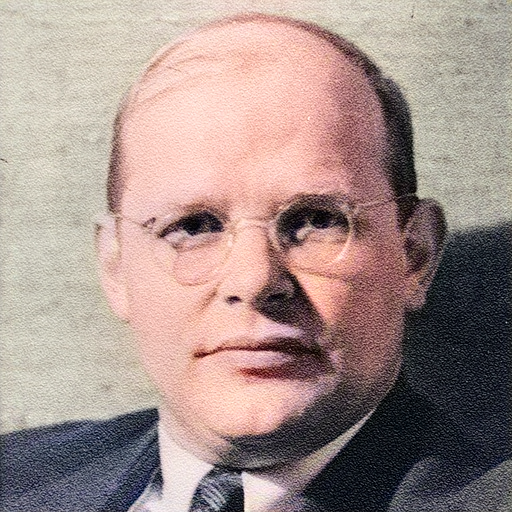
Gudina Tumsa and Dietrich Bonhoeffer
Ditrech Bonhoffer was a German theologian and church leader that ministerd during the Nazi regime. He is famous for being apart of the July 20th conspiracy to overthrow Hitler, writing many theological writtings that still resonate with Christians today such as the Cost of Discipeship and being executed by the armed wing of the Nazi regime.



Gudina Tumsa and Dietrich Bonhoeffer
Ditrech Bonhoffer was a German theologian and church leader that ministerd during the Nazi regime. He is famous for being apart of the July 20th conspiracy to overthrow Hitler, writing many theological writtings that still resonate with Christians today such as the Cost of Discipeship and being executed by the armed wing of the Nazi regime.
It may puzzle some people what an Ethiopian and a German theologian who were born 25 years apart have in common.This assumption is fair.But the power of the Gospel whose source is Jesus Chirst is the same yesterday, today and forever, D]decades and borders have no effect on His scope.Both Bonhoeffer and Gudina find their common ground in their Lord and Savior Jesus Christ.Their common ground– the Gospel– is what brought them together.During his time studying in the United States Gudina picked up and learned a lot about Bonhoeffer, what particularly interested him was Bonhoeffer's approach to the Cost of Discipleship and how Bonhoeffer stood up against the oppressions of faith and people.
Gudina took these from Bonhoeffer and applied them in his own ministry and thus today Gudina is referred to as the Bonhoeffer of Africa.Paul Wee writes on what led Gudina to become interested in Bonhoeffer which later influence his theology, “Gudina was, I believe, drawn to Bonhoeffer for two main reasons; first, because the German theologian was radically Christ- centered, without at the same time finding it necessary to abandon life in the world; secondly, because Bonhoeffers experience with Nazism during the Third Reich was akin to the Ethiopian experience during the period of Italian fasicm in the late 1930’s.” (Church and Society Pg.25). Because Gudina was influenced by Bonhoeffer he understood the Gospel—which is how both men interpreted life– in a similar way to Bonhoeffer.According to Paul Wee that similarity can be found in their belief that Christ was the center of life also known as the holistic approach. “The Bonhoeffer - Gudina legacy offers a single, unequivocal answer.It does so, not only by focusing on the centrality of Jesus Christ within the biblical witness, in which the passion narrative and its meaning for the whole creation is dominant; it does so by demonstrating how the power of death and resurrection is the power of transformation and hope at the heart of individual and community life.” (Church and Society Pg.43). Their theological understanding that Christ was the center of life, As Paul Wee wirtes, meant that He was at the center of everything, from the day to day, to the church and even the government, “For both Bonhoeffer and Gudina, following Luther, there is one Lord over both church and state.” (Church and Society Pg.35). This is the essence of the correlation between Gudina Tumsa and Dietrich Bonhoeffer, the fact that they used their biblical perspective to interact with the political situation that they faced, is a vital link between the two.
Both Gudina’s and Bonhoeffer's situation was one of persecution. The state persecuted religion, murdered and oppressed all aspects of life, “Bonhoffer and Gudina were brought face to face with the burning issues of racial disrimnation and economic and political injustice.” (Church and Society Pg.18). -Paul Wee. Gudina ministred through an oppressive Socialist regime “the Derg” and Dietrich under the infamous “Nazi Regime”. Both regimes are known for some of the most atrocious events committed in human history. The Derg’s most publized genocide is known as the “Red Terror” a two year period spanning from 1976-1978 in which an estimated 500,000 people were murderd by the state. The Nazi regime was responsible for the most barbaric geneocide in human history, the Holocaust, in which there was a mass murder of 6 million Jews. Both Gudina and Bonhoffer understood that their Chirstian responsibility meant responding to the crisis around them for the sake of the Gospel, which is intended to defend the rights of the oppressed. Both men in their own respective ways stood up against the oppression of people. Gudina refused to deny the truth, and lie to the world saying the Derg was for the people. Dietrich’s struggle was different as he took an armed approach, but he also stood for the people being oppressed. Their zealousness, for the truth which is the Gospel leads us to their final link. Found in their death because of the name of Christ and the responsibilities that come with that name. Ditrech Bonhoeffer wrote in the Cost of Discipleship ``When Christ calls a man, he bids him come and die.” Gudina inspired by Dietrich Bonhoeffer worte, “As someone has said, when a person is called to follow Christ, that person is called to die”. (Witness and Discipleship Pg.11). Paul Wee, the man who identifies this link between the two writes, “It is at this point that the life and witness of Dietrich Bonhoeffer and Gudina Tumsa converge.” (Church and Society Pg.36). To conclude we see that the overarching link between Gudina and Dietrich starts because of Christ. The link continues to be seen in how they understood the calling God had for them. Their final link is made clear in their willingness to follow the will of God to the point of death. The legacy of these two men is one of Christ centered discipleship at any and every cost.